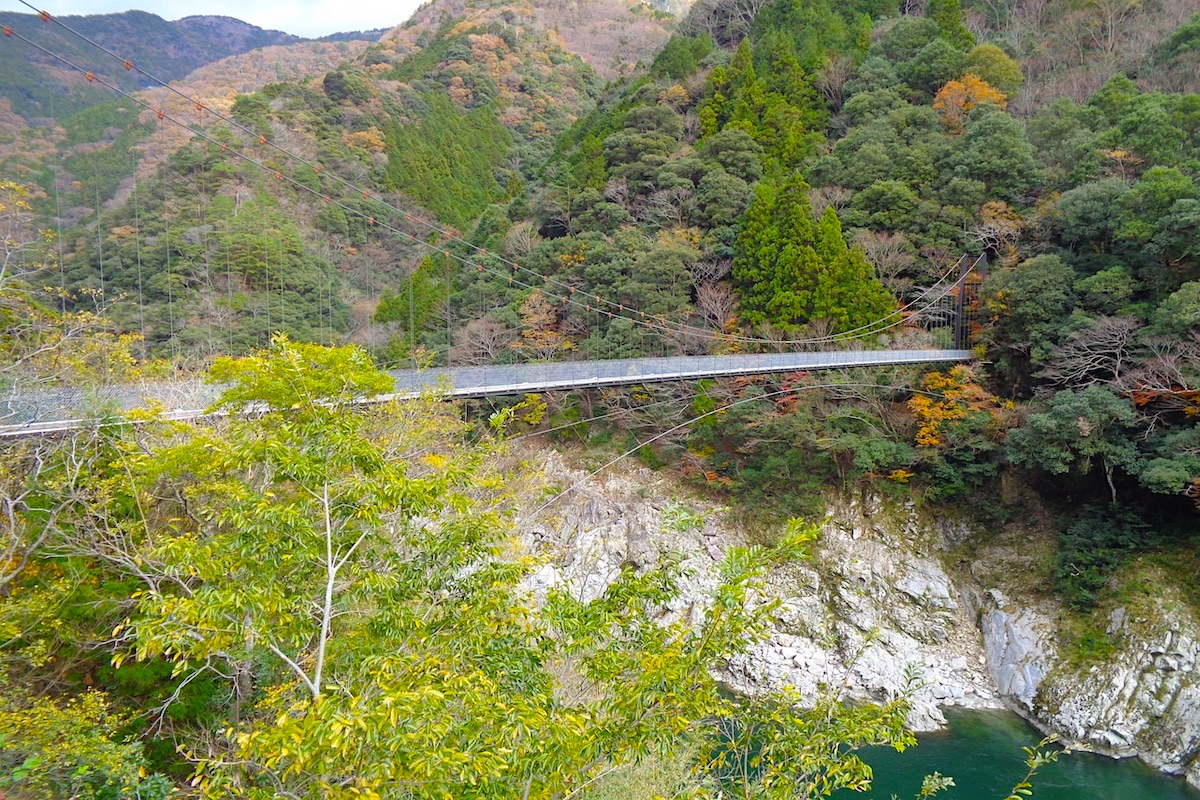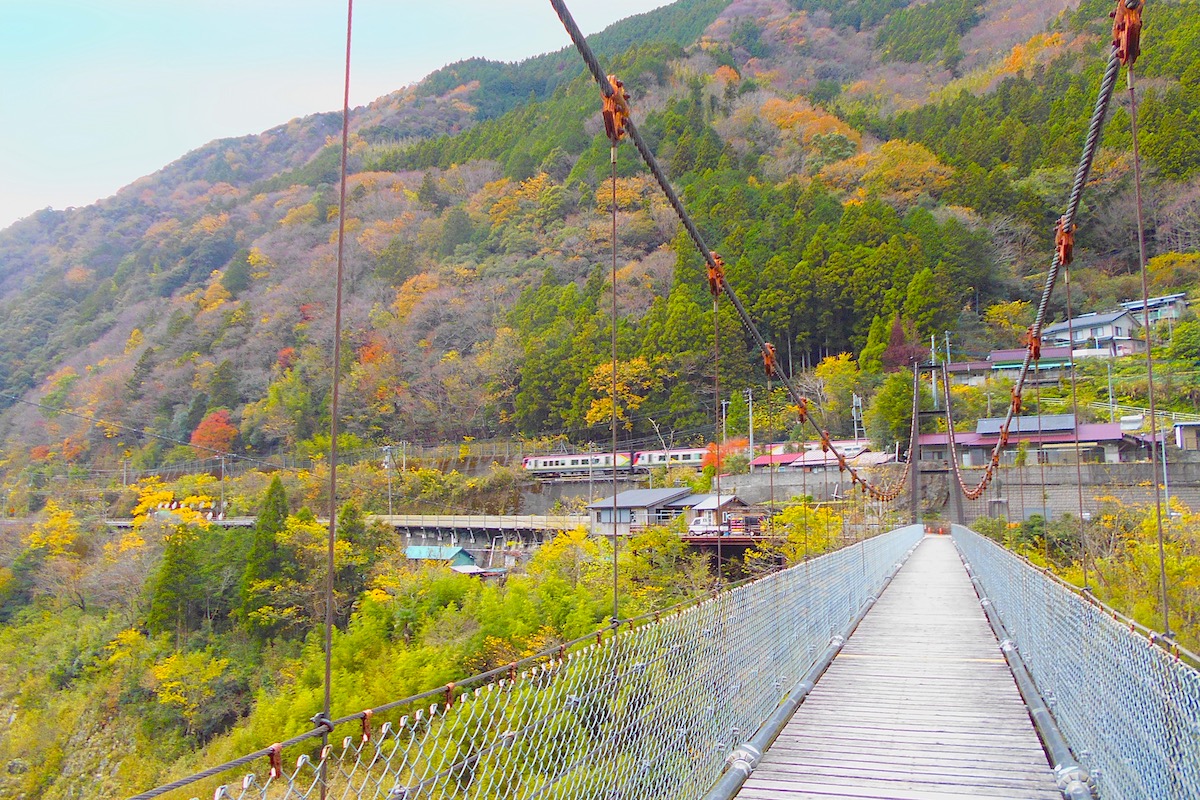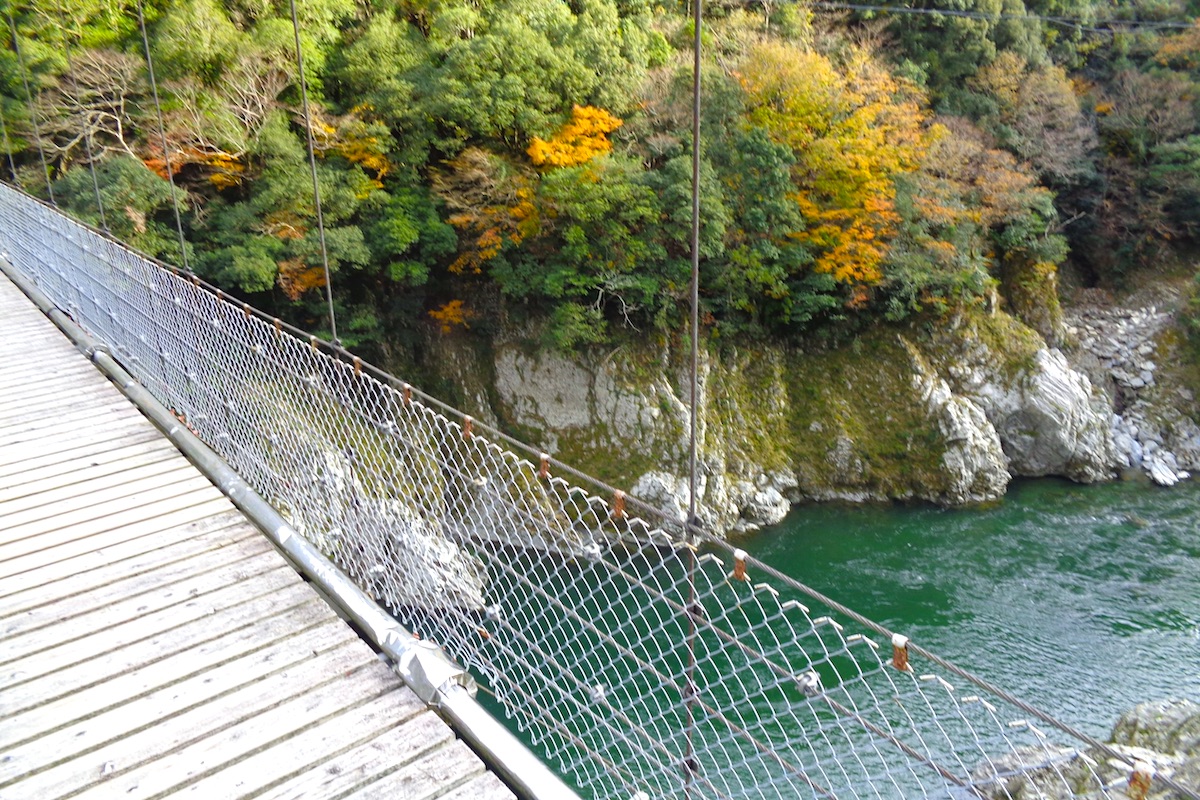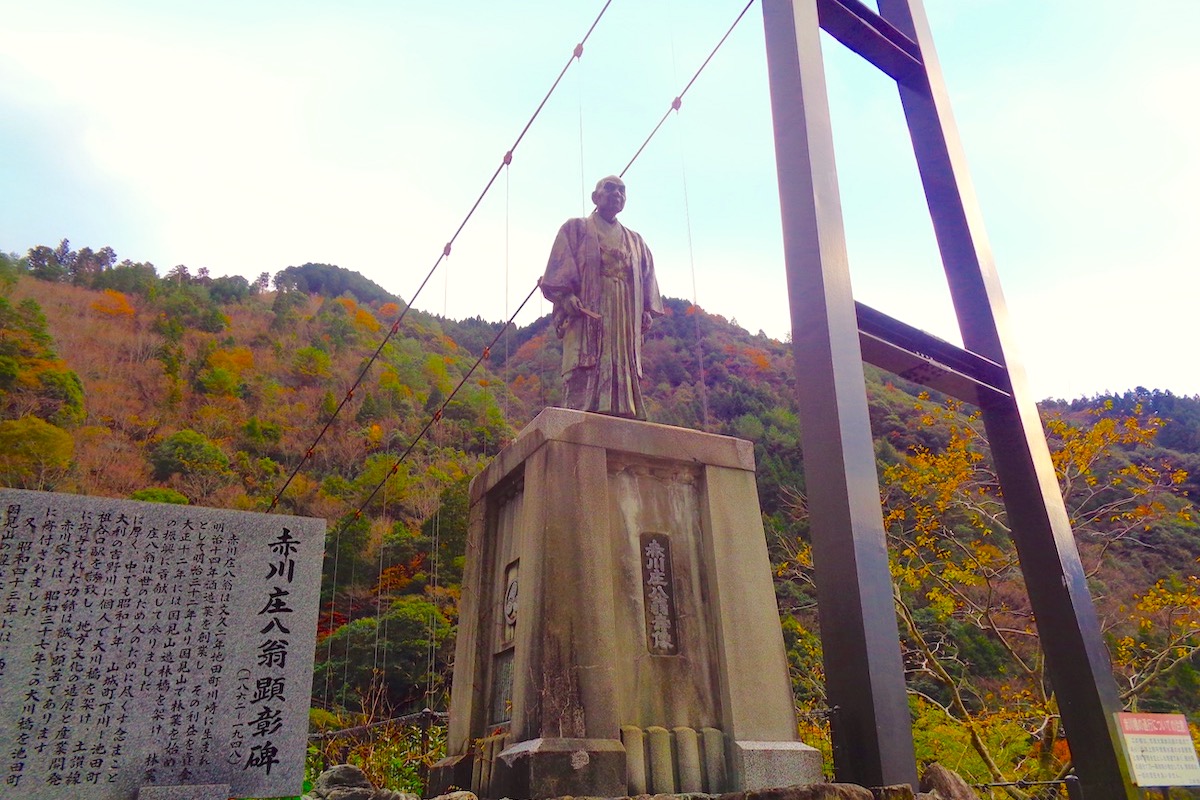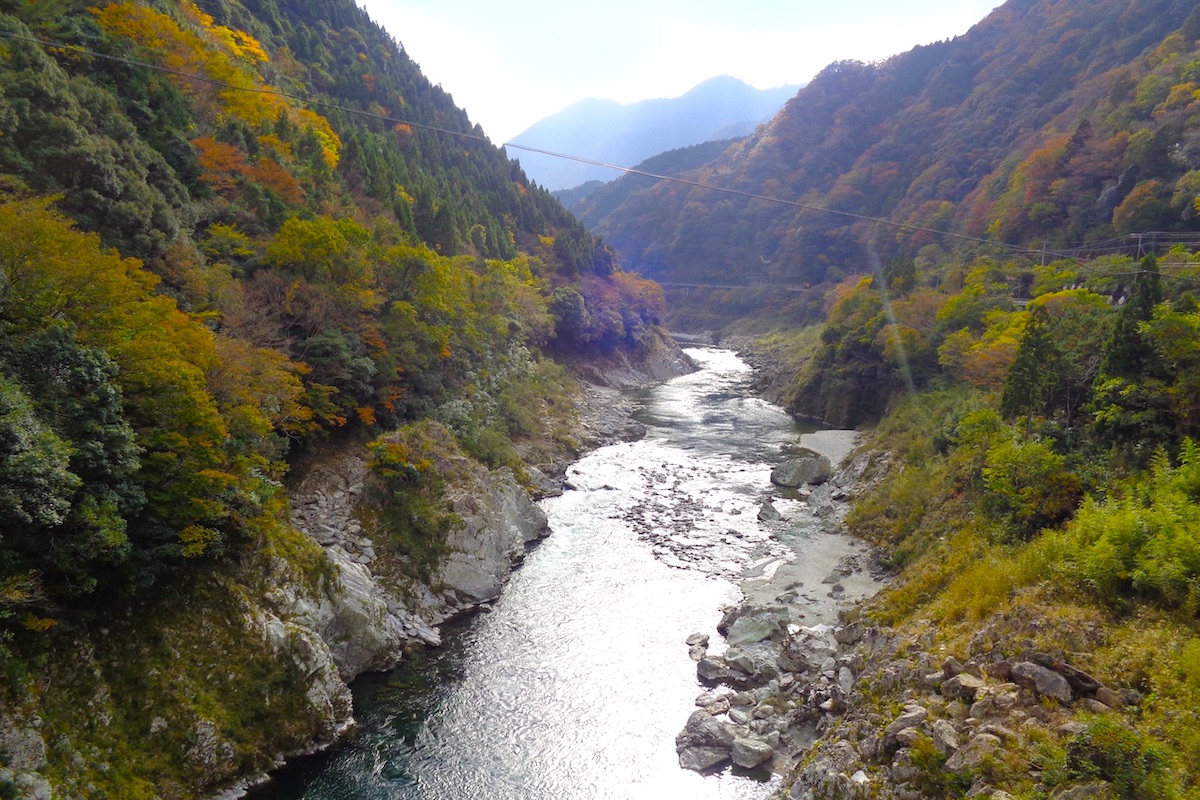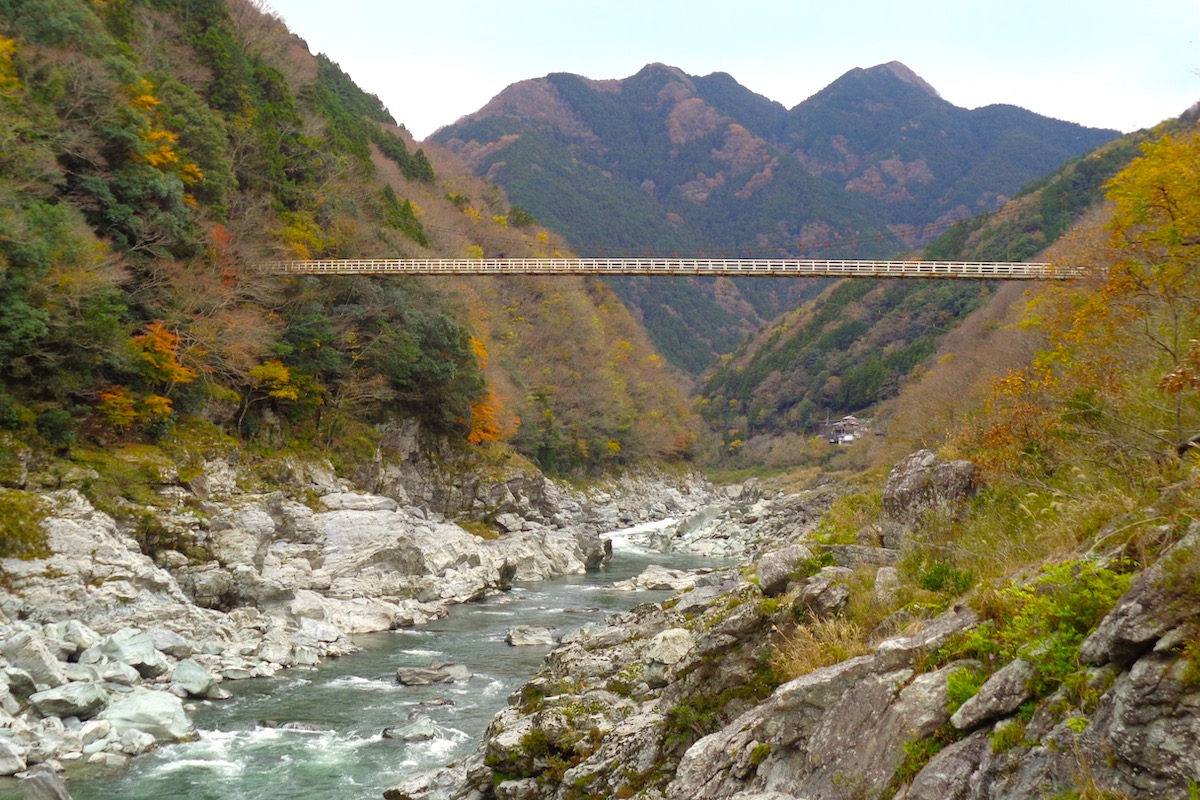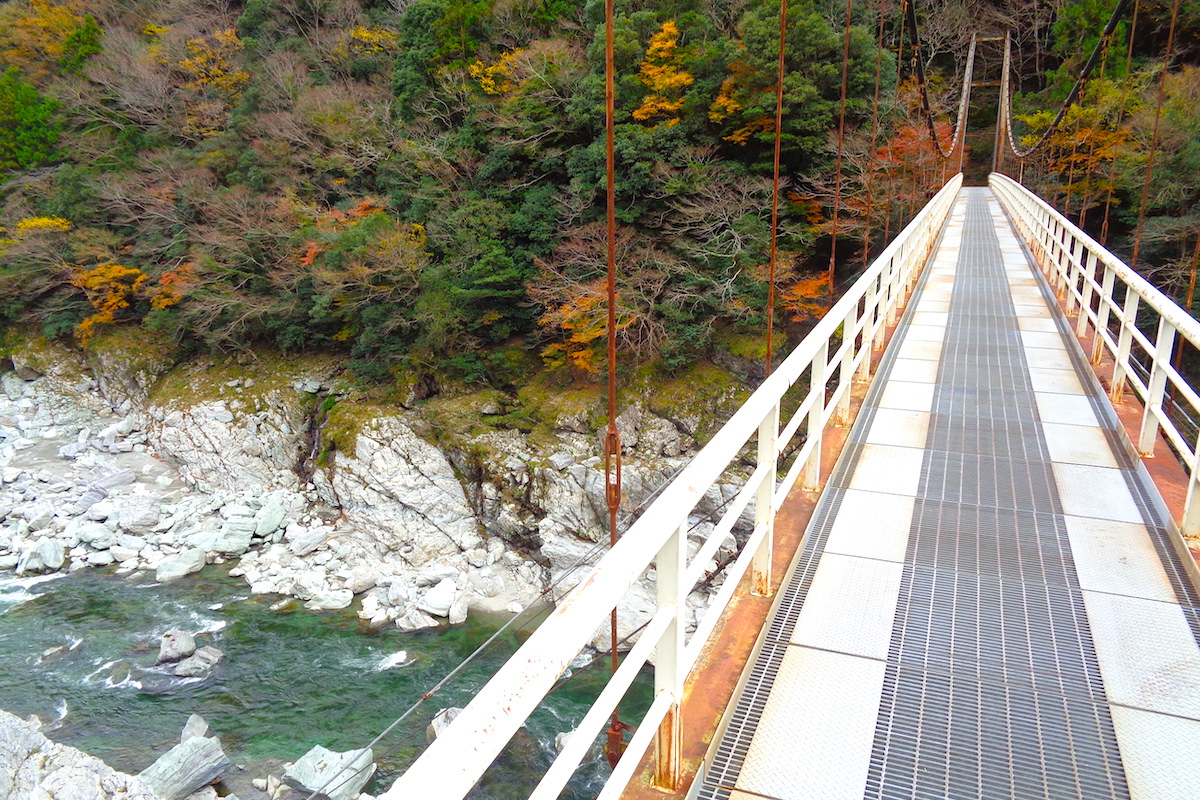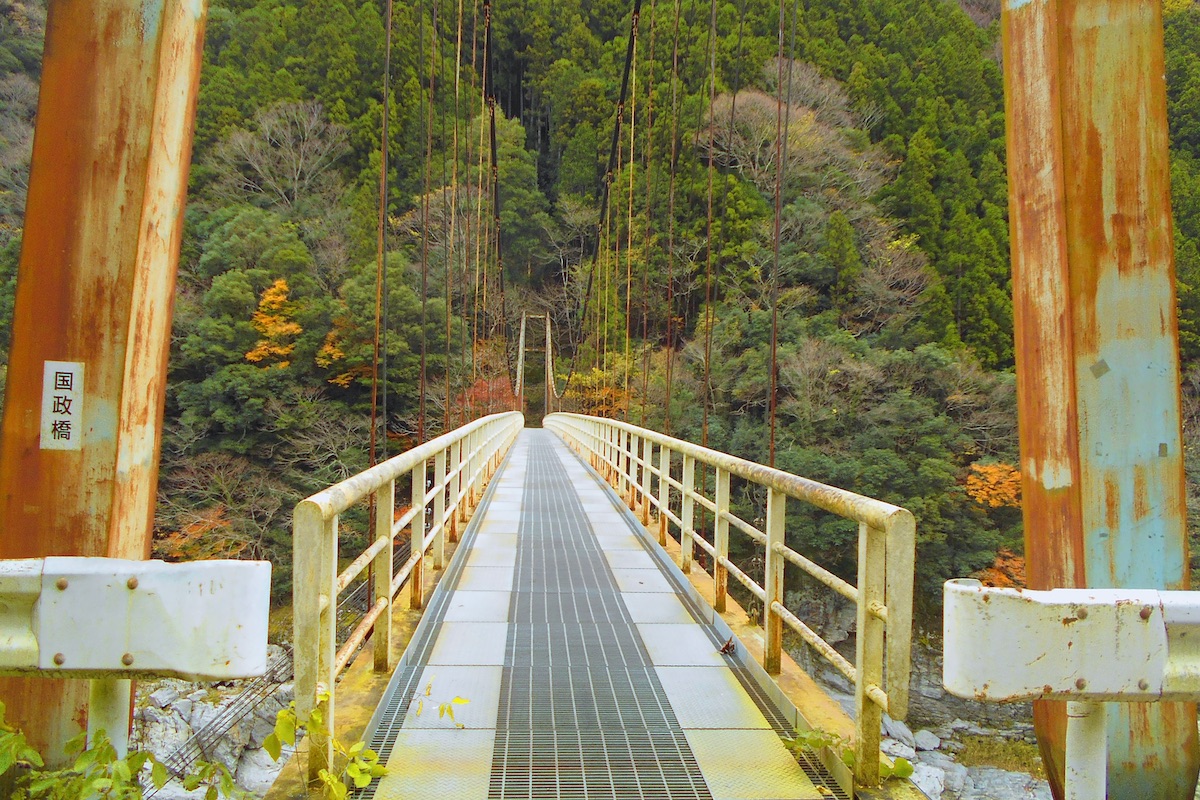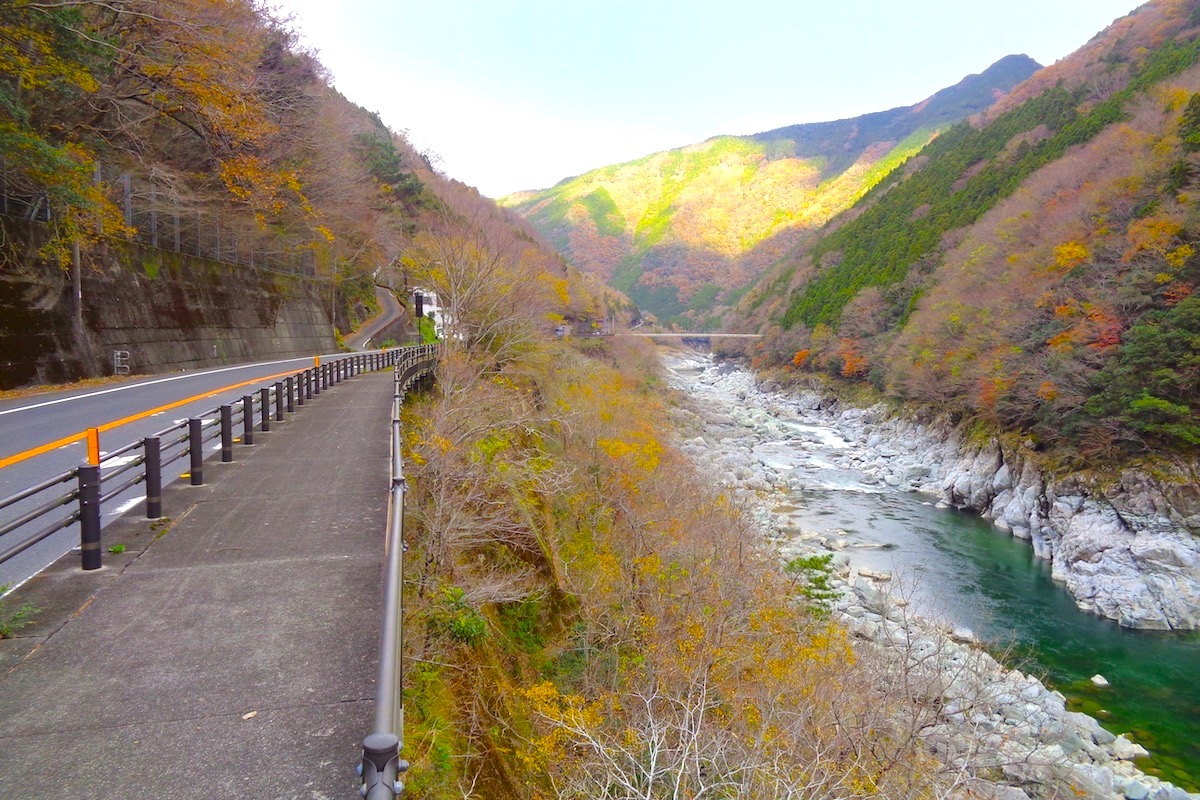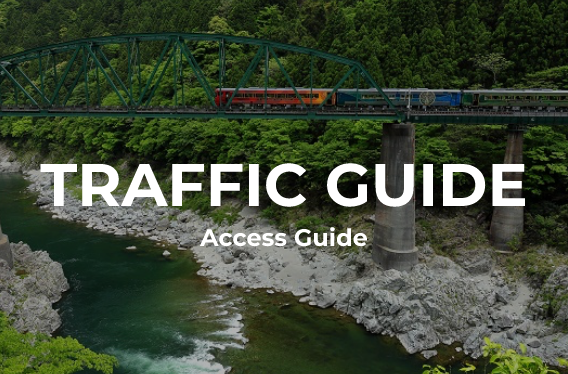Discovering Koboke Gorge – Part 2 | Sublime Views from Breathtaking Bridges
2022.12.18
The Koboke Gorge area of Tokushima’s Miyoshi City is a wonderful place to take in the landscape of central Shikoku. With panoramic viewpoints, high-wire suspension footbridges, and top-notch white-water rafting, this special place is great for connecting with nature.
【Previous post】
>>Discovering Koboke Gorge – Part 1 | A Picturesque Place in Tokushima’s Miyoshi City
Within Koboke Gorge there are several places to take in the panoramic views, and perhaps the best spots to experience the spectacular scenery would be upon one of the suspension footbridges which span the valley.
The historic Akagawa Bridge
Stretching 109 meters from end to end, the Akagawa Footbridge is located on RT 32 just across the road from JR Koboke Station, and its entrance is just next to the ODSS Rafting company.
This steel trestle suspension bridge is about 1.9 meters wide and hangs 36 meters above the river. For anyone crossing, the wooden footboards give a thrilling experience.
The current Akagawa Bridge was built in 1975, but it is actually a replacement for the original bridge which was constructed in 1921 and was one of the first bridges to ever cross the Yoshino River.
Shohachi Akagawa: The Forest King
That first bridge was built by Shohachi Akagawa (hence the bridge’s name), who was a wealthy local land owner and sake merchant, and was considered the “King of the Forests” due to his vast logging empire in this area. He had the bridge built to help access the timber on the other side a century ago, but nowadays the forests are no longer logged here.
Highly respected and also the benefactor for other bridges in the area, a large bronze statue of Akagawa now stands at the entrance to his namesake bridge.
The view from either direction into Koboke Gorge is utterly fantastic upon the bridge, with the lush scenery changing with every season.
If driving, it is best to park below the stairs leading up to JR Koboke Station and then walk about 100 meters over to the bridge. Or it is about a 2km walk north from the WestWest service area (the walking concourse begins just after Koboke Post Office, which is about 1km from WestWest and the SunRiver Oboke Hotel.)
The isolated Kunimasa Bridge
About 3km to the north of the Akagawa Bridge is the equally breathtaking Kunimasa Bridge.
Also with steel trestles but with steel grate footboards instead of wood (so a bit more reassuring to walk upon), this suspension bridge was built in 1974 and is 100 meters long, 1.9 meters wide, and hangs 35 meters above the river.
There is not much in the area around the bridge, only forests, mountains, and the rushing Yoshino River below, but the views are quite impressive.
If driving, there is no actual parking area here, so you would need to park along RT 32 where it is wide enough either before or after the bridge entrance. But be extra careful of the passing traffic!
You can also walk to the Kunimasa Bridge from JR Koboke Station, but it can feel a bit long, and in the area around the station there are several houses, so there is no walking concourse for the first 1km, only a narrow sidewalk.
It is also possible to walk about 3km in the other direction further north from the Kunimasa Bridge to instead reach JR Awa-Kawaguchi Station The walking concourse goes all the way to the RT 319 turn off for Kawaguchi.
Both the Akagawa and Kunimasa Bridges are always open and there is no fee to cross either bridge.
In Part 3 we find out more about Koboke’s history, as well as details on a superb viewing spot and how to go rafting through the gorge.
【Next post】
>>Discovering Koboke Gorge – Part 3 | Cherishing the Natural Beauty of Miyoshi
For more information about the Koboke and neighboring Oboke areas, see here:
https://www.iyatime.com/oboke-koboke
(Text & Photos by: Shaun Lamzy)
Related Posts
-
Exploring Oboke Gorge – Part 2 | A Place for Food, Fun… and Monsters?!
The thrilling cliffs of Oboke Gorge are formed by the mighty Yoshino River as it cuts its way throug
2023.03.21
-
Exploring Oboke Gorge – Part 1 | A Natural Wonder of Miyoshi City
The mighty Yoshino River flows across much of Shikoku, and as it cuts its way through the rugged mou
2023.03.20
-
Iya Kanko Ryokan – Part 3 | Inheriting the Tastes of the Iya Valley
Just a few minute walk from the famed Kazurabashi Vine Bridge, the Iya Kanko Ryokan has been welcomi
2023.03.19
-
Iya Kanko Ryokan – Part 2 | A Family-Run Business Where Life is a Juggle
The Kazurabashi Vine Bridge is one of the most renowned sights of the Iya Valley, and just a couple
2023.03.18
-
Iya Kanko Ryokan – Part 1 | A Traditional Inn near the Kazurabashi Vine Bridge
Acclaimed as one of Japan’s Three Unusual Bridges, the Kazurabashi Vine Bridge is one of the most fa
2023.03.17
-
The Shikoku “Yukigassen” Snowball Fight – Part 2 | The Heat of the Battle in Icy Conditions
The 19th annual “Yukigassen” Snowball Fight Tournament was held recently in the deep mountains of Mi
2023.02.19










